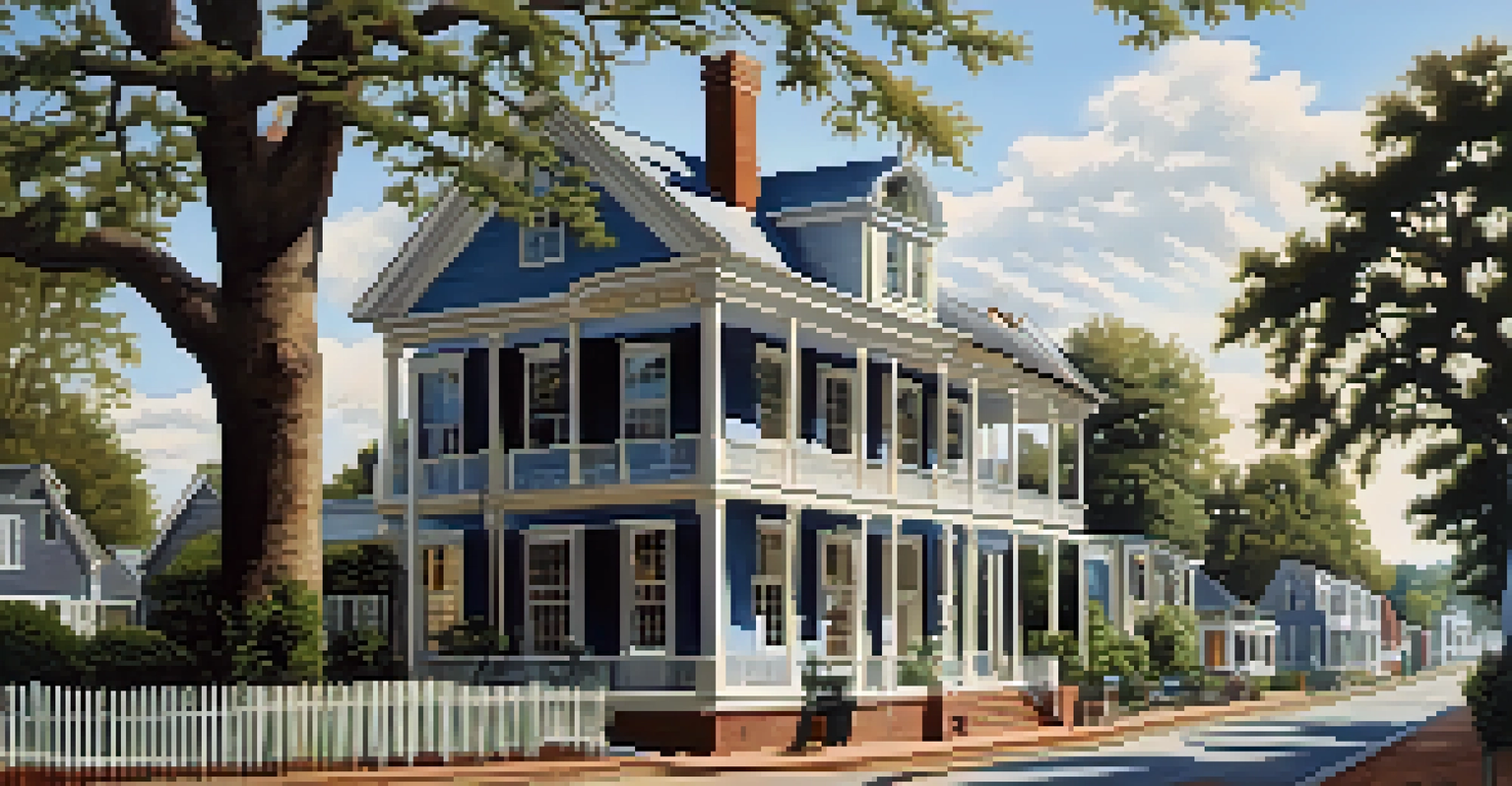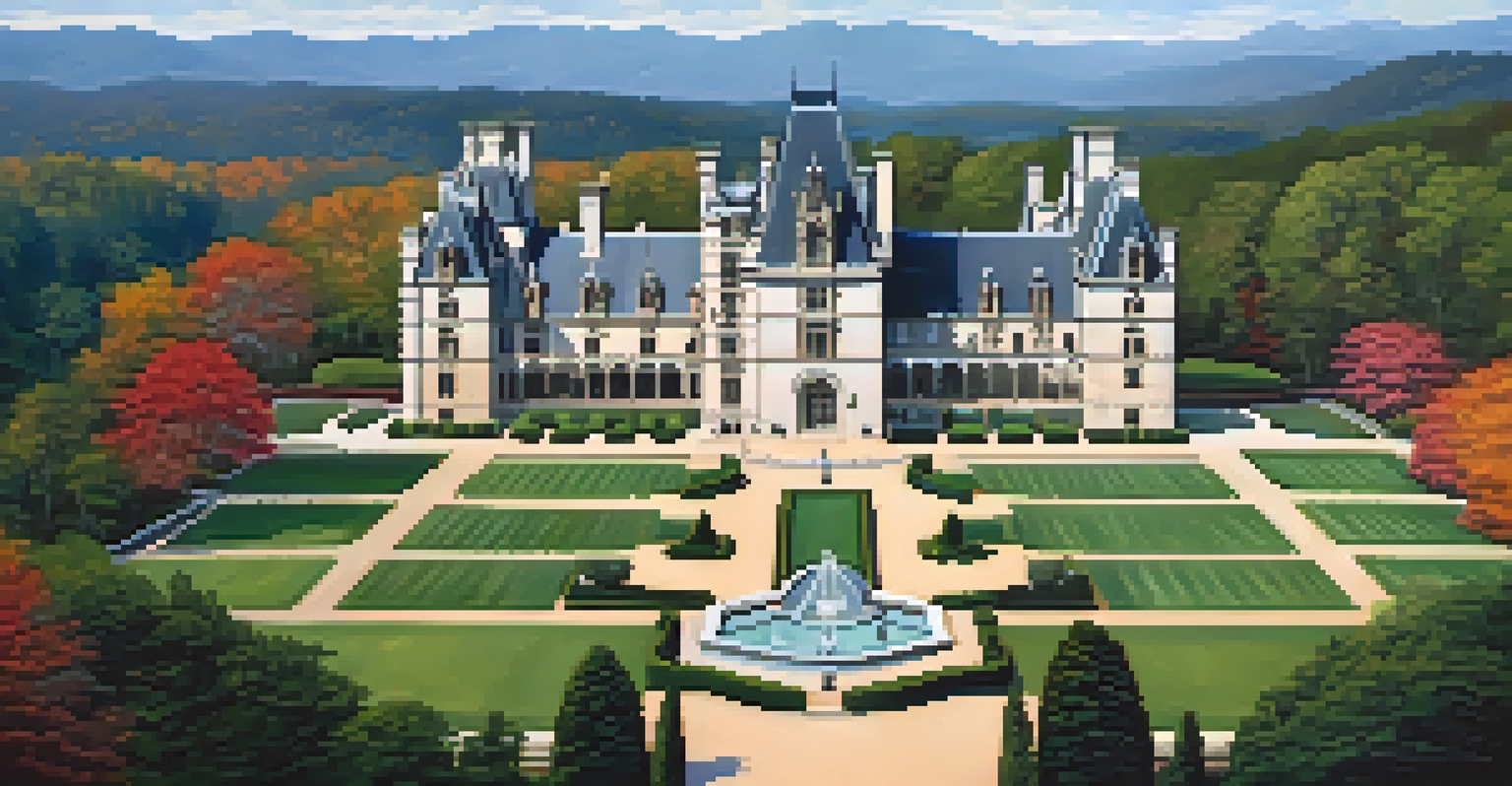Architectural Heritage: Historic Sites in North Carolina

The Significance of Architectural Heritage in NC
North Carolina's architectural heritage is a treasure trove of history, reflecting the state's diverse cultural influences. From Colonial to Modernist designs, each structure tells a unique story about the people and events that shaped the region. This heritage is not just about buildings; it's about preserving the narratives and traditions that define North Carolina.
Preservation is a challenge that requires the commitment of everyone in the community, from local government to concerned citizens.
Understanding architectural heritage helps us appreciate the artistry and craftsmanship involved in these historic sites. It allows us to connect with our past and recognize the importance of preserving these legacies for future generations. As we explore these sites, we gain insight into the values and lifestyles of those who came before us.
Moreover, preserving architectural heritage fosters community pride and can even boost local economies through tourism. Visitors are drawn to the rich history and unique character of these sites, contributing to the overall vitality of the communities that host them.
The Old North State Capitol: A Symbol of Democracy
The North Carolina State Capitol, located in Raleigh, is a stunning example of Greek Revival architecture. Built between 1833 and 1840, this historic building served as the seat of government until 1888 and is now a museum that showcases North Carolina's political history. Its iconic dome and elegant columns stand as a testament to the state's commitment to democracy.

Visitors to the Capitol can explore its beautifully restored rooms, including the House and Senate chambers, which were once bustling with legislators. Guided tours provide insights into the building's architectural details as well as intriguing stories about key figures in North Carolina's history. Engaging with these narratives enriches our understanding of the state's governance.
Architectural Heritage's Importance
North Carolina's architectural heritage reflects its diverse history and fosters community pride while boosting local economies through tourism.
The Capitol also hosts various events and exhibits that highlight the state's heritage, making it a vibrant hub for education and community engagement. By visiting, you not only admire the architecture but also participate in the ongoing dialogue about North Carolina's democratic values.
Historic Bath: North Carolina's First Town
Nestled along the Pamlico River, Historic Bath is recognized as North Carolina's first town, established in the early 1700s. This charming site features well-preserved buildings that reflect the colonial architecture of the time, providing a glimpse into the lives of early settlers. Walking through its streets feels like stepping back in time.
A nation’s greatness is measured by how it treats its weakest members.
Among its notable structures is the Bonner House, which showcases Georgian architectural style and offers fascinating insights into the daily life of the 18th-century inhabitants. The nearby St. Thomas Episcopal Church, with its picturesque graveyard, adds to the historical ambiance and serves as a peaceful spot for reflection.
Historic Bath is not just about the buildings; it also hosts events that celebrate its rich history, including reenactments and festivals. These activities help keep the town's legacy alive, allowing visitors to engage with the past in a fun and interactive way.
Biltmore Estate: A Glimpse into Gilded Age Elegance
The Biltmore Estate in Asheville is an architectural marvel that embodies the opulence of the Gilded Age. Constructed by George Washington Vanderbilt II in the late 19th century, this sprawling mansion features an impressive blend of Châteauesque and Italian Renaissance styles. Its grandeur is matched only by the stunning gardens designed by Frederick Law Olmsted.
Visitors can explore the estate's 250 rooms, each filled with exquisite art and furnishings that reflect the Vanderbilt family's wealth and taste. From the ornate library to the breathtaking conservatory, every corner of Biltmore tells a story of luxury and sophistication. Guided tours offer an in-depth look at the estate's history and the vision behind its construction.
Challenges in Preservation Efforts
Preserving historic sites faces challenges like funding and urban development, but community collaboration can ensure their protection.
Beyond the mansion, the estate's expansive grounds provide opportunities for outdoor activities, making it a perfect destination for families. The combination of architecture, art, and nature creates a unique experience that captivates visitors and showcases the rich heritage of North Carolina.
The Preservation of Historic Sites: Challenges and Triumphs
Preserving historical sites in North Carolina comes with its own set of challenges. From funding and maintenance to the impact of urban development, many sites face threats that can jeopardize their integrity. However, dedicated preservationists and community organizations work tirelessly to advocate for and protect these architectural treasures.
Successful preservation efforts often involve collaboration between local governments, non-profits, and passionate citizens. By raising awareness and securing funding, these groups can restore and maintain historic buildings, ensuring they remain accessible for future generations. Celebrating local history and culture plays a vital role in garnering support for preservation initiatives.
Additionally, educational programs and community events help to foster appreciation for architectural heritage. By engaging the public and sharing the stories behind these sites, we can inspire a new generation of advocates committed to preserving North Carolina’s unique architectural legacy.
The Role of Museums in Showcasing Architectural Heritage
Museums play a crucial role in highlighting North Carolina's architectural heritage by providing context and interpretation for historic sites. They serve as educational hubs, where visitors can learn about the architectural styles, historical significance, and cultural influences that shaped the buildings. This understanding enhances our appreciation of the craftsmanship involved in their creation.
Many museums also host exhibits that focus on specific periods or styles of architecture, offering a deeper dive into the subject. By showcasing artifacts, photographs, and interactive displays, they bring to life the stories behind the structures and the people who built them. These experiences can inspire visitors to explore the sites in person.
Future of Architectural Legacy
Balancing modernization with preservation is essential for maintaining North Carolina's architectural heritage, requiring community engagement and innovative solutions.
Furthermore, museums often collaborate with preservation organizations to promote awareness and advocacy for architectural heritage. By creating programs that engage the community and encourage exploration of local history, they play a vital role in ensuring that these stories continue to be told.
Exploring the Coastal Architectural Heritage
North Carolina's coastal regions boast a rich architectural heritage, characterized by charming lighthouses, historic homes, and maritime structures. These sites reflect the state's deep connection to the sea and the unique challenges of coastal living. Visiting these areas offers a delightful blend of history, architecture, and stunning ocean views.
One iconic example is the Cape Hatteras Lighthouse, which not only serves as a navigational aid but also stands as a symbol of the Outer Banks. Its distinctive black and white stripes are instantly recognizable, and the lighthouse's history of preservation highlights the importance of maintaining these coastal landmarks. Climbing to the top provides breathtaking views and a sense of accomplishment.

Additionally, towns like Beaufort and Wilmington feature beautifully preserved historic districts, showcasing antebellum architecture and coastal charm. Exploring these areas allows visitors to experience the unique stories of the communities that have thrived along the coast for centuries, enriching their understanding of North Carolina's diverse architectural heritage.
The Future of Architectural Heritage in North Carolina
As we look to the future, the preservation of architectural heritage in North Carolina faces both challenges and opportunities. With rapid development and changing demographics, there is a growing need to balance modernization with the preservation of historic sites. Engaging with communities and fostering a sense of ownership over local heritage will be crucial in navigating these changes.
Innovative approaches, such as adaptive reuse, can breathe new life into historic structures while maintaining their character. By repurposing buildings for contemporary use, we can preserve their architectural significance while meeting modern needs. This strategy not only protects history but also contributes to sustainable development.
Ultimately, the future of North Carolina's architectural heritage relies on a collective commitment to preservation. By raising awareness, advocating for preservation efforts, and engaging with the community, we can ensure that these historic sites continue to tell their stories for generations to come.